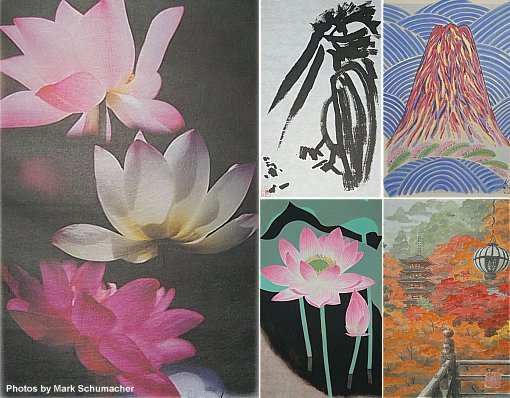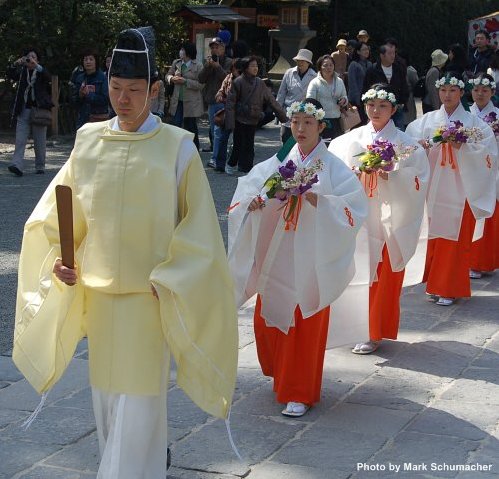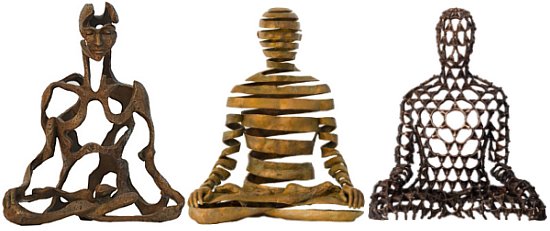Buddha Statues & Japan – August 2011
Sunday, August 28th, 2011Hello Readers,
Lots to report this month.
Kamakura Bonbori Festival
https://onmarkproductions.com/html/bonbori.html
Enjoy nearly 140 photos of paper lantern artwork. Bonbori 雪洞 is a Japanese paper lantern. In August each year, bonbori lanterns are lit in the sacred precincts of the Tsurugaoka Hachimangu Shrine in central Kamakura city. Other cities around Japan have similar lantern festivals. In Kamakura, lanterns are submitted by many artists, novelists and famous people. Roughly 400 bonbori with hand-drawn pictures, calligraphy, and poems are displayed in the shrine’s precincts during the festival.
Becoming a Shintō Priest or Priestess
Current Exhibitions & In The News
» Tokyo National Museum. July 20 through September 25, 2011 . Kukai’s World: The Arts of Esoteric Buddhism. If you are in or near Tokyo, don’t miss this exhibition. I recently attended this exhibition. What a splendid experience. The 99 pieces (of which 98 are national treasures or ICPs) came primarily from Toji Temple. What a delight. And this time the museum got innovative — many of the pieces could be enjoyed “in the round,” letting viewers walk behind the pieces to view the multiple heads and hanging robes and platforms in their entirety. This exhibition introduces masterpieces of Shingon Esoteric Buddhism, with a focus on the objects brought by Kukai from Tang China; works directly related to him (such as his writings and sculptures produced under his instruction). Even Tendai’s much neglected Saicho makes an appearance (calligraphic scroll). Due to massive PR efforts, this exhibition is extremely popular. The place was packed on Wednesday (when I visited), requiring one to wait patiently in line to view the 99 pieces. It is also OBON here, so that too explains the multitude. It took me and my friend (an esoteric practitioner) over three hours to complete the circuit — nonetheless, it was extremely impressive.
» Kyoto National Museum. July 16 to August 28, 2011. Now Ended.
Creatures’ Paradise: Animals in Art from the Kyoto National Museum.
See review of this exhibit entitled Japan’s interpretation of all creatures great and small.
By SACHIKO TAMASHIGE. Special to The Japan Times.
» Nara National Museum. Special Exhibitions Page. On to India! Xuanzang’s 30,000-Kilometer Trek. July 16 through August 28, 2011. Secret Treasures & Sacred Image of Yoki Tenman Jinja: “The Hallowed Yoki Shrine at Hatsuse.” July 16 through August 28.
» Bronze sculptures by UK artist Sukhi Barber
https://sukhibarber.com. She spent twelve years in Kathmandu (Nepal) studying Buddhist philosophy and lost-wax bronze casting.
» Japanese brothers who championed Korean ceramics.
By SACHIKO TAMASHIGE. Special to The Japan Times
https://search.japantimes.co.jp/mail/fa20110825a1.html
» Buddhist Art News https://buddhistartnews.wordpress.com
News on Buddhist art, architecture, archaeology, music, dance, and academia.
Written and updated regularly by Jonathan Ciliberto and John Johnston. Includes
reviews of new books related to Buddhist art.
» IBM helping National Diet Library of Japan digitize its literary artifacts on massive scale. https://rdmag.com/News/Feeds/2011/08/information-tech-ibm-develops-full-text-digitization-system-for-nat/
» Mask maker keeping Shimane tradition alive | The Japan Times Online
Englishman’s skills help sustain 17th-century Iwami-Kagura ceremonial dance rituals.
https://search.japantimes.co.jp/mail/fl20110827a1.html
» 1893 expo’s historic Japanese Phoenix panels reunited, restored.
https://southtownstar.suntimes.com/7068303-522/1893-expos-historic-japanese-panels-reunited-restored.html
Enjoy
mark from kamakura








